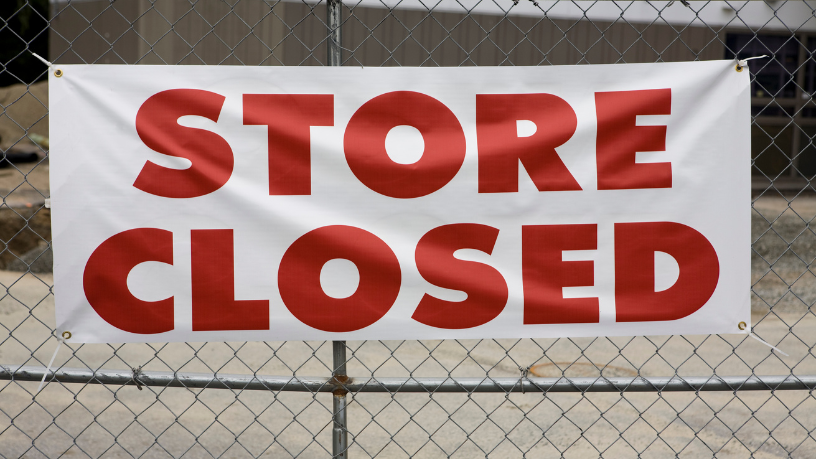Forever 21 in crisis marks the end of a trajectory that, for decades, defined the concept of fast fashion for young people around the world, including Brazil. The news that the brand’s American operator, F21 OpCo, filed for Chapter 11 bankruptcy on March 17, 2025 signals the company’s second collapse in six years. In Brazil, where the struggling Forever 21 had already reduced its presence after its first bankruptcy in 2019, the impact is being felt by both consumers and the malls that housed its stores. The combination of fierce competition from online giants such as Shein and Temu and the decline in traffic in physical malls has sealed the chain’s fate. This scenario reflects a drastic change in consumer habits, with the struggling Forever 21 struggling to adapt to an increasingly digital market. It is the end of an era for a brand that was once synonymous with affordable and trendy fashion.
The bankruptcy filing of Forever 21, in crisis, reveals worrying figures that show the gravity of the company’s financial situation. With assets estimated at between 100 and 500 million dollars and debts between 1 and 5 billion, the company announced that it will keep its stores and website operating temporarily while it conducts an orderly liquidation. In Brazil, where Forever 21, in crisis, had already closed several units after the first Chapter 11, the expectation is that the remaining stores will follow the same path if a viable buyer does not emerge. The inability to compete with the price and speed of Chinese digital platforms was pointed out as the main reason for the collapse. Forever 21, in crisis, was unable to keep up with the agility of its competitors, who dominate the market with cheap clothes delivered directly to the consumer. This mismatch exposes the weaknesses of a business model stuck in the past. The struggling Forever 21 is also suffering the consequences of a retail market that has changed radically since its heyday in the 2000s. Founded in 1984 by South Korean immigrants in Los Angeles, the brand grew by offering youthful fashion at unbeatable prices, attracting teenagers to its large spaces in shopping malls. In Brazil, the struggling Forever 21 arrived in 2014 with enthusiasm, but its rapid expansion and reliance on physical stores soon became a burden. With the boom in e-commerce during the pandemic and the popularity of brands like Shein, traffic in malls fell, leaving the struggling Forever 21 with high operating costs and declining sales. The inability to invest in a robust online presence further aggravated the situation. The traditional fast fashion model, which the brand helped popularize, is now its biggest obstacle.
Competition from Shein and Temu is a pillar of the Forever 21-in-a-crisis narrative, showing how global retail has been reshaped by these digital platforms. These Chinese companies offer clothing at even lower prices, with collections that are renewed in weeks, while the struggling Forever 21 has remained tied to a slower and more expensive production cycle. In Brazil, where purchasing power is price-sensitive, consumers have quickly migrated to these alternatives, abandoning the struggling Forever 21’s physical stores. In addition, Donald Trump’s tariffs on Chinese imports in the US have affected the brand’s supply chain, increasing its costs. The struggling Forever 21 has lost the battle to remain relevant in a market where speed and cost are king. This shift in preferences leaves a void in the segment that the brand once dominated.
The struggling Forever 21 has also faced growing criticism over the environmental impact of fast fashion, a factor that influenced its downfall. Consumers, especially younger ones, are more aware of the unsustainability of disposable clothing, a pillar of the struggling Forever 21 model. In Brazil, where the brand has already been the subject of debates about working conditions in its production chain, this negative perception has gained strength. Brands such as H&M and Zara, despite also being fast fashion, have invested in sustainable lines to adapt to the demands of the public, something that Forever 21, in crisis, has failed to do effectively. This failure to keep up with ethical and ecological expectations has alienated part of its customer base. The brand’s crisis is, in part, a reflection of this disconnect with current values.
The impact of Forever 21’s crisis in Brazil goes beyond its stores, affecting jobs and the shopping mall ecosystem. After its first bankruptcy, the brand had already reduced its presence to a few stores, such as those in São Paulo and Rio de Janeiro, but now the total liquidation threatened the jobs of salespeople and administrative teams. Shopping malls, which are already struggling with the closure of other chains, are losing yet another anchor that attracted young consumers. Forever 21’s crisis leaves a legacy of nostalgia for Brazilians who associated its stores with moments of affordable and cool shopping. However, the lack of a solid plan to revitalize the brand in the country suggests that its return is likely. Forever 21’s crisis symbolizes the end of a cycle for physical retail in Brazil.
The story of Forever 21’s crisis is a warning to other retailers that still rely on outdated models. The purchase of the brand in 2020 by a consortium formed by Authentic Brands Group, Simon Property and Brookfield after the first bankruptcy was not enough to save it. In Brazil, partnerships such as the pop-ups with Shein in the stores of the struggling Forever 21 sought to inject life into the operation, but the results were timid. The lack of innovation and the inability to reinvent itself in a market dominated by digital condemned the brand to this second collapse. Forever 21 in crisis shows that survival in retail requires more than cost-cutting or liquidations; it requires a profound transformation. The failure to adapt to its destiny.
Finally, Forever 21 in crisis leaves a void in fast fashion that will be quickly filled by agile and digital competitors. In Brazil, where the brand was once an icon among young people, its disappearance marks the end of an era of unbridled consumption in shopping malls. Forever 21 in crisis is not just a victim of competition or the economy; is an example of how retail must evolve to survive the expectations of a connected, conscious world. As its stores close and inventories are liquidated, the memory of Forever 21 in crisis remains as a reminder of simpler times in retail. The future belongs to the brands that understand this lesson. Forever 21’s crisis is, above all, a story of transformation forced by time.
Author: Clodayre Daine
Source: Assessoria de Comunicação da Saftec Digital









